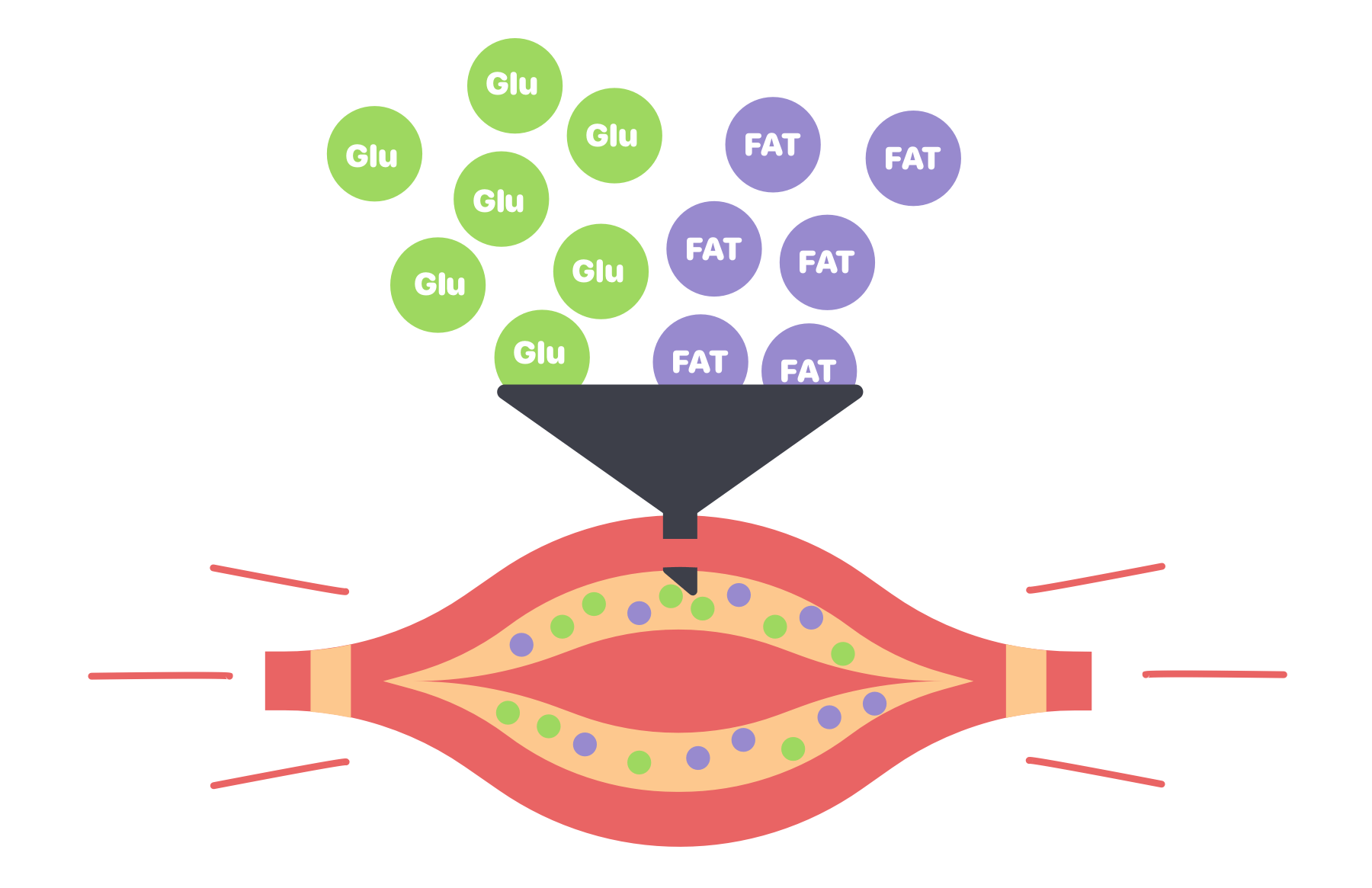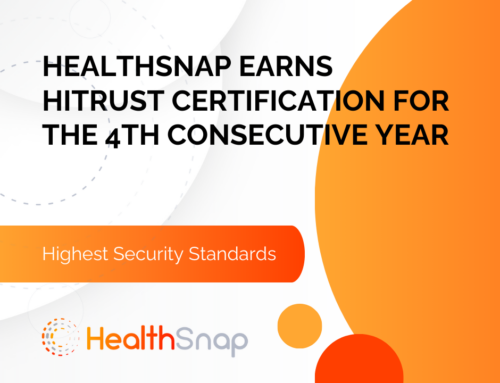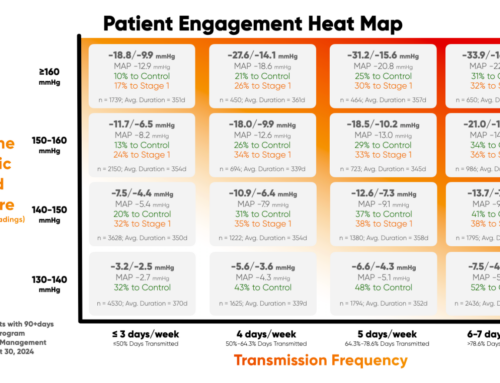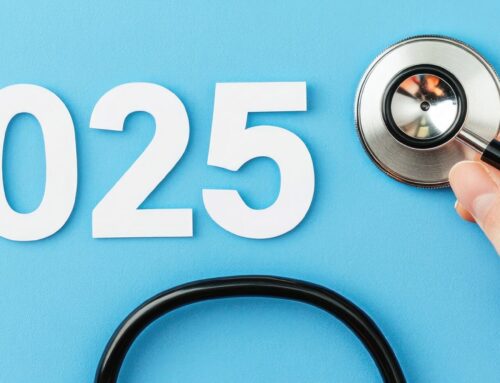The holiday season is a time of joy, celebration, and often, indulgence in festive treats. Moreover, for individuals managing blood sugar levels, particularly those with diabetes or prediabetes, this time of the year can present challenges. Balancing the enjoyment of the holiday season with the need to maintain stable blood sugar levels is vital for overall health.
In this article, we will explore three key strategies to help you manage blood sugar during the holidays and discuss the supportive role of Virtual Care Management programs, such as Remote Patient Monitoring (RPM) and Chronic Care Management (CCM).
Dietary Strategies for Blood Sugar Management During the Holiday Season
With an abundance of festive meals and holiday treats, it can be challenging to keep blood sugar levels in check during the holiday season. By adopting mindful dietary strategies, individuals concerned with managing blood sugar can strike a balance between enjoying the festivities and maintaining their health.
Mindful Carbohydrate Intake
Carbohydrates play a significant role in affecting blood sugar levels, making it crucial to be mindful of intake. Opt for complex carbohydrates found in whole grains, legumes, and vegetables. Choose whole, unprocessed foods over refined options, as they offer more nutritional value and promote better blood sugar control.
Fiber-Rich Choices
Fiber is a friend to blood sugar management. It slows down the digestion and absorption of sugars, preventing rapid spikes. Prioritize fiber-rich foods such as fruits, vegetables, whole grains, and legumes. These not only contribute to better blood sugar control but also offer essential nutrients and promote a feeling of fullness.

Glycemic Index Awareness
Understanding the glycemic index (GI) of foods can help in making wiser dietary choices. Low-GI foods, like non-starchy vegetables, legumes, and whole grains, have a slower impact on blood sugar levels. Incorporate these options into holiday meals to mitigate sudden spikes.
Hydration Habits
Staying hydrated is a simple yet effective strategy for blood sugar management. Water helps flush out excess sugar and can contribute to maintaining healthy blood sugar levels. Choose water or other zero-calorie beverages over sugary drinks to avoid unnecessary spikes.
Portion Control Practices
During holiday gatherings, where lavish feasts can be the norm, keeping an eye on portion sizes becomes crucial. Use smaller plates to encourage moderate servings. Avoid going back for seconds immediately; instead, wait for some time to assess your actual hunger.
Healthy Snacking
Incorporate healthy snacks between meals to avoid extreme hunger, which may lead to overeating. Opt for snacks with a combination of protein and fiber, such as nuts, yogurt with berries, vegetable sticks with hummus, or a similar combination. These choices help maintain steady blood sugar levels.
Probiotic-Rich Choices
Probiotics, found in fermented foods like yogurt and kefir, may contribute to improved blood sugar regulation. Including these foods in your holiday diet not only supports gut health but may also have positive effects on blood sugar control.
Limit Sugary Treats
While it is tempting to indulge in holiday sweets, limiting the intake of sugary treats is crucial. Open the door for smaller portions or share desserts with others. Consider healthier dessert alternatives, such as fruit salads, to satisfy your sweet tooth without causing significant blood sugar spikes.

Balance Macronutrients in Each Meal
Create balanced meals that include a combination of macronutrients—protein, carbohydrates, and fats. Protein-rich foods help stabilize blood sugar levels, while healthy fats and complex carbohydrates contribute to sustained energy. For example, pair lean protein with whole grains and vegetables for a well-rounded meal.
Choose Healthy Cooking Methods
Consider healthier cooking methods, such as baking, grilling, steaming, or roasting, instead of frying. These methods preserve the nutritional content of foods and avoid the addition of unnecessary fats. Experiment with herbs and spices to enhance flavor without relying on excessive salt or sugar.
Explore Healthy Recipe Alternatives
Modify traditional holiday recipes to make them more blood sugar-friendly. Experiment with substitutions, such as using whole grain flour, reducing sugar content, or incorporating healthier fats. Many traditional recipes can be adapted without compromising flavor.
Read Food Labels
When purchasing packaged foods, read food labels carefully. Pay attention to the total carbohydrate and fiber content, added sugars, and serving sizes. This information can guide you in making informed choices that align with your blood sugar management goals.
Pre-plan and Bring Your Own Dish
If attending holiday gatherings, consider pre-planning your meals or bringing a dish that aligns with your dietary needs. This ensures that there are healthy options available, reducing the temptation to indulge in foods that might negatively impact blood sugar levels.
Utilize Technology for Nutrition Tracking
Consider using nutrition-tracking apps or devices to monitor your food intake during the holiday season. These tools can help you stay accountable to your nutritional goals and provide valuable insights into the composition of your meals.
Educate Family and Friends
Communicate your dietary preferences and needs to family and friends. Educate them about your blood sugar management goals and the importance of making nutritious choices in sync with your fasting blood glucose test results. Nurturing a supportive environment can make it easier to adhere to your nutritional plan.
Lifestyle Management for Blood Sugar Control During the Holiday Season
Some key lifestyle management strategies to help you enjoy the holiday season without compromising blood glucose level or fasting blood sugar level include the following:
Prioritize Regular Physical Activity
Maintaining an active lifestyle is crucial for blood sugar management. Regular exercise helps improve insulin sensitivity, allowing the body to use glucose more effectively. During the holidays, find opportunities to stay active, whether it’s through festive walks, dancing at celebrations, or engaging in winter sports. Aim for at least 150 minutes of moderate-intensity exercise per week, as recommended by health experts.

Incorporate Short, Active Breaks
If your holiday season involves extended periods of sitting, make an effort to incorporate short, active breaks. These breaks can involve light stretching, quick walks, or simple resistance exercises. Physical activity breaks throughout the day can contribute to better blood sugar control and overall well-being.
Get Sufficient Quality Sleep
Adequate and quality sleep is crucial for overall health and blood sugar management. Poor sleep can negatively impact insulin sensitivity and increase the risk of insulin resistance. Ensure you prioritize sleep hygiene by sticking to a consistent sleep schedule, creating a relaxing bedtime routine, and minimizing screen time before sleep.
Manage Stress Effectively
During the holiday season, it’s important to implement stress management techniques. Incorporate activities that promote relaxation, such as deep breathing exercises, meditation, or yoga. Connecting with loved ones, setting realistic expectations, and taking time for self-care can also contribute to stress reduction.
Set Realistic Goals
Setting realistic health goals during the holiday season is key to successful blood sugar management. Instead of aiming for perfection, focus on achievable objectives. This might include maintaining a consistent exercise routine, making mindful food choices, or prioritizing stress reduction. Celebrate your successes, no matter how small, to stay motivated.

Limit Alcohol Intake
Alcohol can affect blood sugar levels and may interfere with medications for those with diabetes. If you choose to consume alcohol, do so in moderation. Switch over to lower-carbohydrate drink options, avoid sugary mixers, and monitor your blood sugar levels closely. Always consult with your healthcare provider about alcohol consumption and its potential impact on your specific health situation.
Utilize Technology for Monitoring
Incorporate technological tools into your blood sugar management plan. Virtual Care Management programs, such as Remote Patient Monitoring (RPM) and Chronic Care Management (CCM), can provide valuable and ongoing support. These programs often include wearable devices that help track key health metrics, offering near real-time insights into your blood sugar patterns. If your doctor does not offer Virtual Care Management, consider exploring if you’d like to monitor yourself with a health tracking device and/or app.
Lean on Support Networks
The holiday season can be challenging, but you don’t have to navigate it alone. Lean on your support networks, whether it’s family, friends and community, or a healthcare team. Share your goals and challenges, and allow others to provide encouragement and assistance in adhering to your blood glucose management plan.
Educate Yourself Continuously
Stay informed about the latest advancements in blood sugar management and healthy lifestyle practices. Continuous education empowers you to make informed decisions about your health. Attend workshops, read dependable sources, and consult with healthcare professionals to enhance your knowledge.

Remote Monitoring for Blood Sugar Management During the Holiday Season
Blood sugar monitoring is a fundamental aspect of diabetes management and blood glucose control. It involves regularly checking blood glucose levels to understand how various factors, including food choices, physical activity, and medications, impact glucose fluctuations. For individuals navigating the holiday season, where indulgent meals and sugary treats are abundant, consistent monitoring is essential for making informed decisions regarding dietary choices, adjusting medication, and maintaining overall well-being.
Remote Patient Monitoring (RPM) Glucose Monitors
Remote Patient Monitoring (RPM) has revolutionized healthcare by leveraging technology to monitor patients outside of traditional healthcare settings. RPM cellular glucose meters specifically cater to individuals managing diabetes, offering connected monitoring.
Advantages of RPM Glucose Monitors
-
Ongoing Data Access: RPM glucose meters offer ongoing and connected access to blood glucose data, enabling individuals to work with their care team to make more informed decisions about dietary choices, physical activity, and medication.
-
Alerts and Notifications: RPM platforms often come with customizable alerts and notifications. Providers can set parameters for target glucose levels, and the system will alert them if readings deviate from the desired range, allowing for prompt intervention.
-
Data Trends and Analysis: Advanced RPM platforms often include features for analyzing trends in blood sugar data. This can be valuable for both individuals and healthcare providers in identifying patterns, understanding the impact of lifestyle choices, and making personalized adjustments to management plans.
-
Enhanced Connectivity: For the saavy tech-user, cellular glucose meters can often be integrated with smartphones or other digital devices. This enhanced connectivity promotes greater accessibility and ease of use for individuals managing their health in real-time.
Blood Sugar Management Using RPM Glucose Monitors During the Holiday Season
-
Preventive Monitoring: Utilize RPM glucose monitors preventively during the holiday season. Regularly check blood sugar levels before and after meals, particularly when trying new or unfamiliar dishes. This proactive approach allows for immediate adjustments to prevent significant glucose fluctuations.
-
Smart Dietary Choices: Incorporate glucose monitoring to make smart dietary choices. If a particular food or meal causes a spike in blood sugar levels, individuals can modify their subsequent choices to maintain balance.
-
Timely Medication Adjustments: For individuals on diabetes medications, remote glucose monitoring can assist care teams in making timely adjustments. If there are consistent deviations from target glucose levels, healthcare providers can use monitoring data to fine-tune medication regimens.
-
Personalized Lifestyle Modifications: Analyze trends and patterns in blood sugar data to make personalized lifestyle modifications. This may include adjusting meal timings, incorporating more physical activity, or managing stress effectively.
-
Collaboration with Healthcare Providers: Share RPM data with healthcare providers for collaborative decision-making. Remote glucose monitoring facilitates more informed discussions during virtual or in-person consultations.
The Role of Virtual Care Management Programs (RPM and CCM) in Managing Blood Sugar Levels During the Holiday Season
The integration of Virtual Care Management Programs, such as Remote Patient Monitoring (RPM) and Chronic Care Management (CCM), has emerged as a highly effective approach to enhance blood sugar management all year around, and especially during the holiday season.

Remote Patient Monitoring (RPM)
RPM plays a key role in diabetes management during the holidays. This technology involves the use of digital devices, such as cellular-enabled glucose meters, to track and transmit near real-time health data to healthcare providers. For blood sugar management, RPM glucose monitors offer ongoing monitoring, allowing individuals and healthcare teams to gain insights into trends, patterns, and fluctuations in blood glucose levels.
Chronic Care Management (CCM)
CCM programs are designed to provide ongoing support and coordination of care for individuals managing more than one chronic condition. During the holiday season, CCM becomes a valuable component of care, offering regular check-ins, personalized care plans, and collaborative efforts between patients and healthcare providers to optimize blood sugar control.

Offer a Proactive Approach to Patients for Blood Glucose Management with HealthSnap
Healthcare providers can help patients adopt a proactive approach to diabetes management this holiday season by integrating HealthSnap’s Virtual Care Management programs into their diabetes care plans. With the power of HealthSnap’s Remote Patient Monitoring (RPM) and Chronic Care Management (CCM) solutions, your practice can improve patient outcomes, while also enhancing staff productivity. To explore the possibilities of Virtual Care Management from HealthSnap for your healthcare practice, please click here call us at 888-780-1872 (Ext. 3) to schedule a consultation with one of our specialists.






